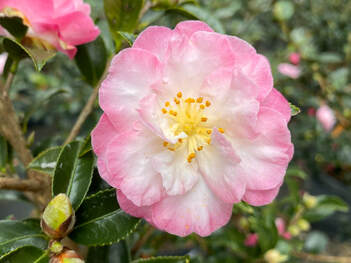 Trees and Shrubs: There are other shrubs that bloom in the winter, but certainly none as showy as camellias. And these plants absolutely love our southern climate. If you have space in your garden for multiple varieties of camellias, you can have bloom starting in October and continuing through March and possibly even April. So continue to visit the nursery to see what camellias are blooming now and take some home with you. They will bring delight for years to come. Now is also the time of year that one can learn to appreciate the form and structure of trees. For most people, when thinking of crape myrtles, their richly colored blooms will come to mind. But for me, their richly hued bark and sinuous limbs come to mind first. If I were choosing a crape myrtle variety, I would be visiting the nursery now when the bark and branches are easily seen. Check out the potted plants on offer but also take time to see the mature varieties planted at the nursery. These will give you a good idea of their mature size but also let you appreciate the colors and form of bark, trunk and limbs. 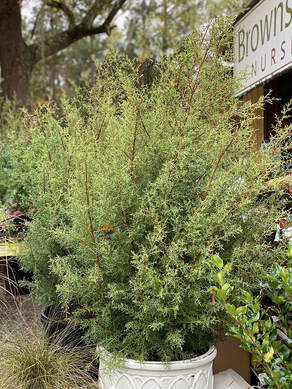 Evergreen trees come in all shades of green from deep, dark green to Kelly green to incredible tints of blue-green. Some evergreen plants are needed in the landscape for winter interest and one of my favorites is the Clemson University selection of the Arizona cypress, Carolina Sapphire. These trees are actually tolerant of our southern climate despite their common name and origin. All they need is good drainage. They are drought tolerant and even salt tolerant once established. And the color is truly blue. Like many of the needled evergreens they also make a good outdoor Christmas tree. If you prefer broad-leaf trees there are plenty to choose from among the magnolias, hollies, cherry laurel, loquat, and live oak. Evergreen shrubs that can eventually become small trees are tea olives, banana shrub, wax myrtle, Loropetalum chinense and non-dwarf Camellia sasanqua varieties. All of these plants can contribute branches for December holiday decorations indoor and out. Use them to make wreaths and swags, and to dress tables and mantles. Clemson’s HGIC has more on decorating with fresh greenery at: https://hgic.clemson.edu/factsheet/holiday-decorating-with-fresh-greenery/ Perennials and Annuals: By now we may have experienced frost that has burned both your perennials and annuals. A little trimming and dead-heading should take care of any damaged parts. For perennials without hollow stems and seed heads that attract birds, any dead tissue can be cut just above soil level. Continue to remove dead and frost damaged flowers from winter blooming annuals to encourage more blooms. The Importance of Organic Matter 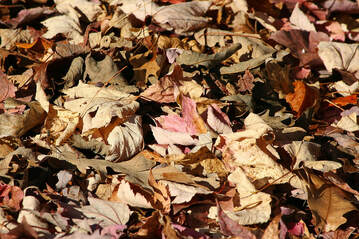 Every fall I get exasperated as I see piles of leaves accumulate on the side of the road that will end up in a landfill. There are multiple reasons why I find this practice upsetting. Heathy soil is one of the foundations for healthy plants and organic matter is a critical component of a healthy soil. Organic matter in the soil evolves from the natural process of recycling plant matter and, to an extent, animal matter. Given the opportunity, leaves can be decomposed by microbes and micro-fauna into the very important soil component of organic matter. Organic matter is broken down further into the components of carbohydrates, proteins, peptides, amino acids, fats, waxes, lipids and very importantly, humus. Organic matter is typically composed of about 65-75% humus. Humus cannot be easily broken down and so, along with minerals, can persist in the soil for hundreds of years. To understand how important humus in the soil is to plants one needs to understand how nutrients in the soil become available to plant roots. Nutrients in the form of either cations (positively charged) or anions (negative charged) are attracted to and adsorbed to soil particles or colloids which are also charged. The most important types of soil colloids are composed of silicate clays, iron or aluminum oxides or humus. Of most importance is the negative charge of these colloids that will attract and adsorb what is referred to as the cation exchange capacity or complex (CEC). It is these cations in the CEC that plant roots absorb. Macro and micro nutrients necessary for plant growth that are adsorbed as cations by soil colloids and then absorbed by roots are ammonium (NH4 + ), potassium (K+ ), calcium (Ca2+), magnesium (Mg2+), iron (Fe2+), manganese (Mn2+), nickel (Ni2+) and zinc (Zn2+). The net negative charge varies for the different soil colloid types. The higher the amount of charge the higher the number of the cations above that can be adsorbed by colloids and this is where humus really stands out. The clay colloids with the highest net charge will be in the range of -100 to -200. The charge on humus can be as high as -500 which means it can adsorb 2.5 to 5 times as many cations. Humus has other positive characteristics too. It helps create soil structure which improves soil aeration and at the same time improves the water holding capacity. Soils high in organic matter will contain more microbes and micro and macro fauna that are also beneficial to plant growth. So simply put, a soil high in humus or organic matter is a much more fertile and productive soil. Muck soils, also known as Histosols, are some of the most productive soils in the US and are used predominantly for vegetable production. They are comprised of at least 20% organic matter and may be as high as 80%. For comparison, typical clay soils (Ultisols) of the southeastern US have less than 5% organic matter-probably closer to 2- 3%. Sandy soils of the southeastern US may only have 1% organic matter or less. So, what can a person do to increase the organic matter in their soil? Save those leaves! 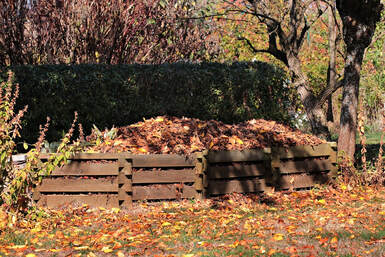 Composting fallen leaves is one option but the easiest practice is to use them as mulch under the trees that dropped them. This practice can greatly improve the health of shade trees in numerous ways. Mulch, besides contributing organic matter to the soil, can help hold soil moisture during drought, can prevent soil compaction, can increase the number of earthworms which contribute to soil fertility and aeration, can moderate soil temperatures and prevent the growth of weeds. Leaves can also be used as a mulch under shrubs, in the vegetable garden and under fruiting trees, bushes and vines. The leaves will break down quickly once temperatures warm up in the spring and by midsummer they will have basically disappeared. By the time leaves start falling again it will be time to replenish the mulch. Many folks have heard animal manures and composts referred to as “black gold”. I like to refer to leaves as “brown gold”. People will pay lots of money for bags of compost and mulch when they have lots of “brown gold” in their own yard. Why not keep your money by keeping your leaves? That is certainly what I do. The main question that I have gotten about using leaves in my yard under large shade trees concerns whether the leaves blow back out into the yard? Some will but most don’t. To help keep them in place I use pine straw scattered lightly on top of the leaves (fortunately I have pine trees also). A thin layer of bark mulch would do the same. And remember those leaves will start breaking down in just a few months. Once that process begins, they will not be going anywhere except into the soil. I also get the response from lawn lovers that they want grass growing under their trees. Typically, that is a lose/lose situation for both the lawn and the trees. Neither will be in optimum health. Mulch under trees is much more aesthetically pleasing than a sparse, unhealthy lawn full of weeds. It is much more sensible to place a mulch at least under the tree canopy. A 3”-4” layer is all that is needed but be sure to keep the mulch away from the base of the tree. Another benefit of keeping those leaves in your yard is to keep them out of landfills. It costs you and the community money to put them there. Why pay to remove something that can be beneficial to keep? Fall is Ideal for Planting in Our Area 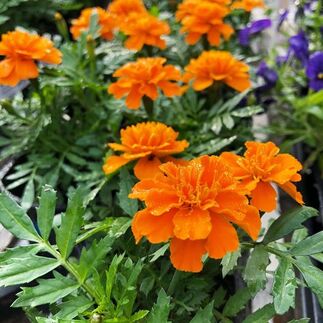 Trees, Shrubs, Perennials & Annuals: Although potted plants can be planted anytime of the year, Fall is still the best time to plant hardy trees, shrubs, and perennials. Cooler temperatures and lessening light intensity mean less stress for the plants. Root growth will continue while soil temperatures remain around 50 degrees Fahrenheit and above. Always be sure to take into consideration the mature size of trees and shrubs as you decide what to plant. This precaution will eliminate the need to prune excessively or remove whole plants in the years to come. It is also time to be thinking about changing out your warm season annuals for cool season ones. Think about different color schemes using reliable bloomers such as violas, pansies, Cool Wave pansy, Panola Pansy, Snapdragons, Sweet Alyssum, Mums, and Dianthus. For foliage accents try Ornamental Brassicas such as Kale, Cabbage and Mustard, as well as Dusty Miller, and Herbs that prefer cooler temperatures such as Parsley, Dill, Fennel and Cilantro. Perennials such as Creeping Jenny and Lamium, are great to mix in with the annuals, especially in containers. For containers, mums are wonderful but usually have a short bloom period. Many can be treated as perennials though and planted in the garden when finished blooming. Ask about the varieties that can be treated this way. There are several evergreen plants that can be used as the main focal point of your containers. For shade areas try using Gardenias, Cast Iron Plants, Ferns, Farfugium, Pieris, Plum Yew, Azaleas, or Camellias. For sunnier placement, try Liriope, Lomandra, Boxwood, Holly, Encore Azaleas, Japanese Yew, Rosemary, Junipers or Palms. 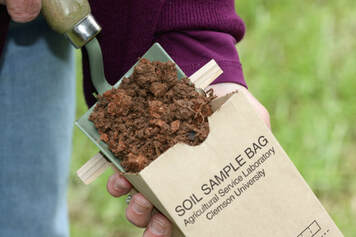 Camellia season has begun! Our earliest blooming Sasanqua, Sparkling Burgundy, has started flowering. These evergreen shrubs are a must have for the southern shady garden. They are the Queens of the Fall and Winter Garden. There are different flower forms (Single, Semi-Double, Anemone, Peony, and Formal Double), as well as various colors, both variegated and solid. Camellias are long lived plants that are easy to cultivate and love. To learn more, visit the American Camellia Society website (American Camellias and consider joining the local Coastal Carolina Camellia Society. Guests are always welcome at the monthly meeting that occurs on the third Tuesday of the month at 6:30 October Calendar of Gardening Tasks PM. We typically meet at the Essex Village Church of Christ, 736 Savage Road, Charleston, SC. You can contact the Coastal Carolina Camellia Society President, Darren Sheriff, at his email: [email protected]. Soil Testing: Now is the time to prepare your vegetable garden for next spring. If you have not sent off a soil sample, there is still time. Your soil should be tested every three years at least. Commercial vegetable growers test at least once every year because lime application to correct pH is critical for plant growth. Every part of your yard can benefit from a soil test including the lawn and ornamental plantings. For more information on soil testing please visit: Clemson Soil Testing Clemson Fact Sheet Lawns: There is still time for a pre-emergent herbicide application for your lawn. Time your application after there have been at least four consecutive nights where temperatures were between 55- and 60-degrees Fahrenheit. For more information on weed management in lawns please visit: Clemson Managing Weeds Sometimes a winterizing fertilizer may be recommended by lawn professionals. If your soil is sandy and you did not fertilize regularly during the warm season your lawn may benefit from a potassium application at this time. The best way to know if your soil is deficient in any needed element, though, is to have it tested. So please read the section above on soil testing. |
Categories
All
Archives
June 2024
|

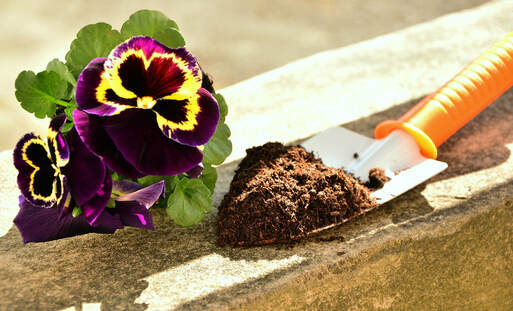
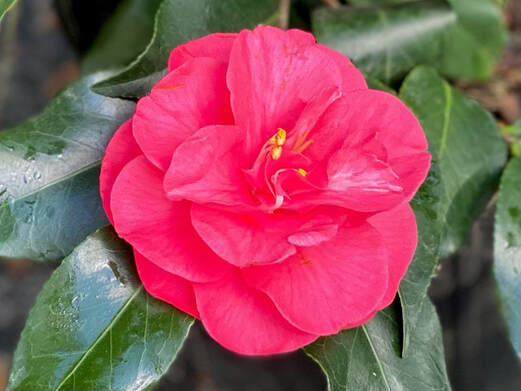
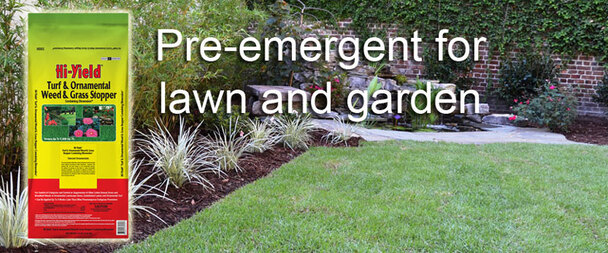
 RSS Feed
RSS Feed



